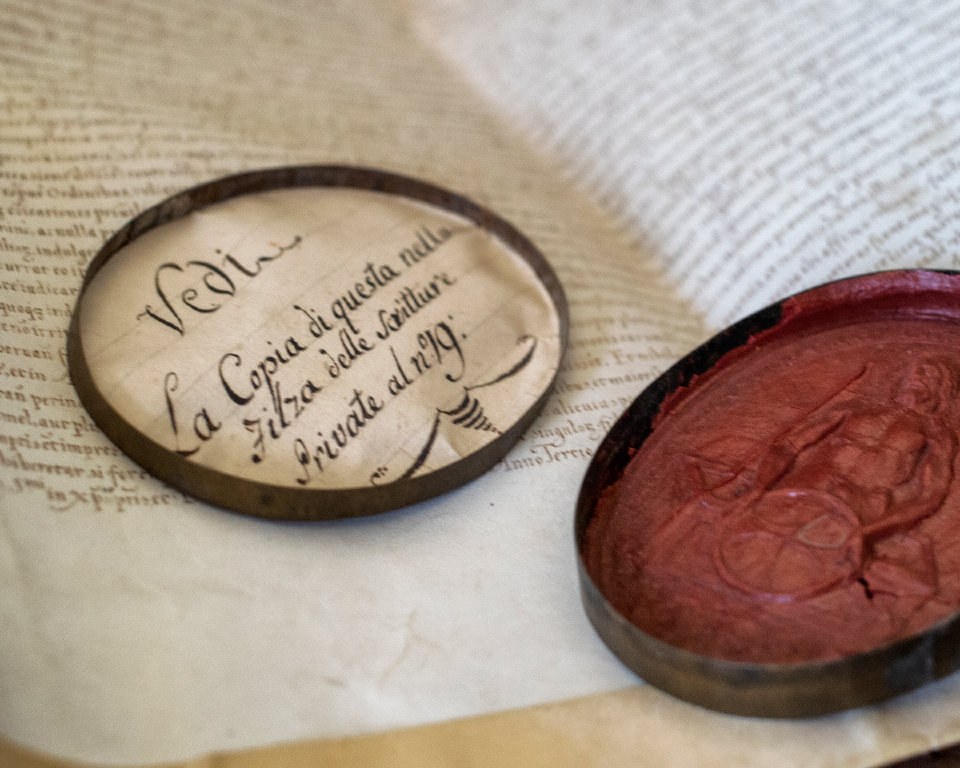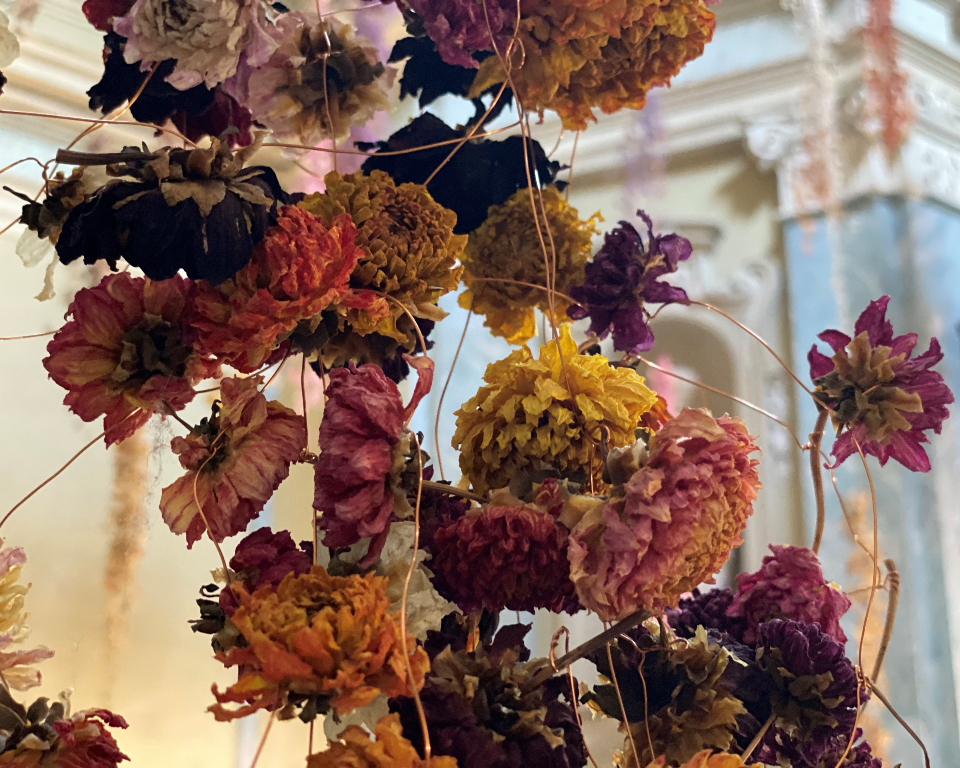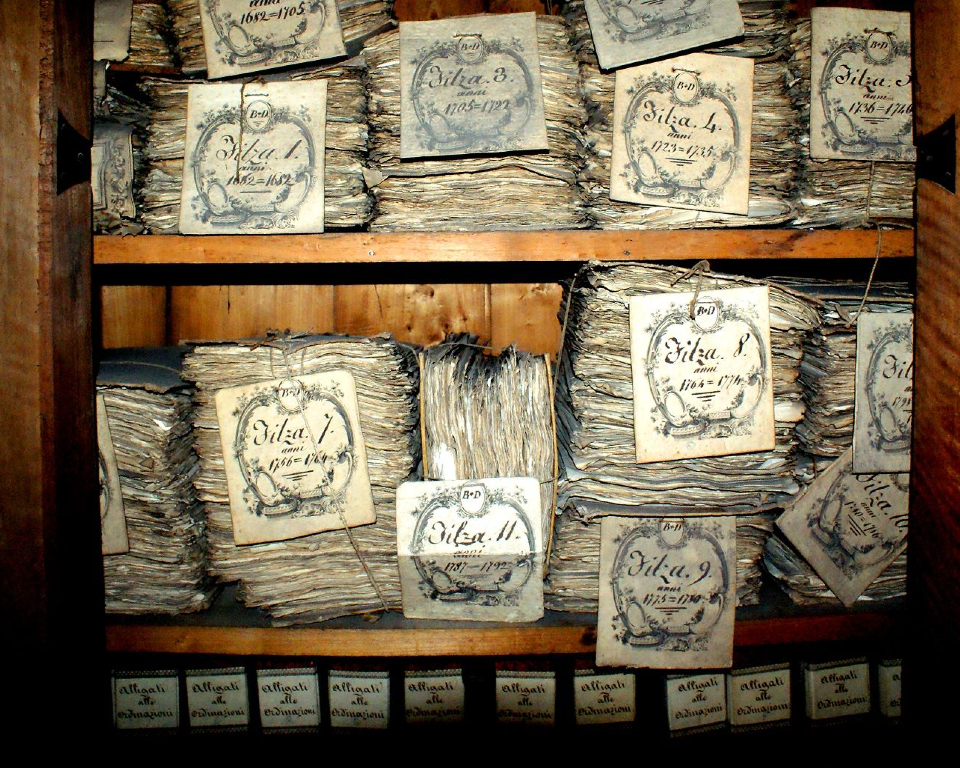Nel cuore di Parma, a due passi dalle strade affollate del centro, si trova un luogo ancora oggi poco conosciuto ma di grande fascino, dove il tempo sembra essersi fermato: l’Antica Farmacia San Filippo Neri, un laboratorio galenico risalente al 1789 in cui, fra gli scaffali di legno scuro, gli antichi strumenti, le vetrerie e i barattoli si può ripercorrere lo sviluppo dell’assistenza e della farmaceutica dal XVII al XX secolo. Immersi nel silenzio che profuma di piante officinali e di polvere, gli occhi curiosi si posano sugli strumenti chimici e i flaconi eleganti, indagando le sostanze e i preparati antichi che non furono mai venduti, ma solo regalati ai poveri curati dai medici della Congregazione di Carità.
Visita guidata garantita con un minimo di 2 persone.
Visitare l'Antica farmacia San Filippo Neri e l’Archivio della Congregazione di Carità significa ripercorrere la storia della medicina e della sanità, interrogarsi sul rapporto dell’uomo con la natura ... more
Visitare l'Antica farmacia San Filippo Neri e l’Archivio della Congregazione di Carità significa ripercorrere la storia della medicina e della sanità, interrogarsi sul rapporto dell’uomo con la natura e dell’uomo con la società, un rapporto mediato dalla tecnica, dalla scienza, dalla cultura e dalla mentalità propria di ciascuna epoca.
Poco conosciuto perché inaccessibile per oltre mezzo secolo, l’Oratorio di San Tiburzio è stato recuperato e reso visitabile solo di recente. La struttura affonda le sue radici in un’era precristiana quando, nell’area dove ora sorge l’Oratorio, vi era un Tempio pagano dedicato a Marte o Giunone sul quale successivamente sarebbe stata eretta la prima chiesa cristiana di Parma. L’attuale edificio, dalla piccola ed elegante struttura, affascina per le linee sinuose e l’impiego sapiente degli stucchi e non finisce di stupire, scrigno di storie e avventurose vicende.
Visita guidata ad Antica farmacia S. Filippo Neri, Archivio della Congregazione di Carità e Oratorio di S. Tiburzio.
Tutti i giorni alle ore 11:00 e alle ore 15:00
Antica Farmacia San Filippo Neri,
Vicolo San Tiburzio, 5 - 43121 Parma PR
In auto:
Parma è servita da dall'Autostrada A1 Milano-Bologna e dall'Autostrada A15 Parma-La Spezia. La SS 9 Via Emilia percorre l'intero nucleo urbano da est ad ovest, mentre la SS 62 della Cisa la troviamo a Sud.
In treno:
La Stazione ferroviaria di Parma è situata nella parte nord della città vicino a quella che viene chiamata Barriera Garibaldi, una delle antiche porte cittadine. Essa collega la città alle più importanti tratte ferroviarie nazionali: le principali linee dirette più frequenti di treni regionali e ad Alta Velocità, collegano Parma a Bologna e Milano, principali stazioni di scambio per altre città italiane ed anche per i principali aeroporti.

More than 400,000 unpublished documents ranging from the 13th to the early 20th century that tell the story of the city of Parma in backlighting are the heritage preserved in the Archive of the Congregation of Charity. In addition to recipe books, inventories, expense notes and notebooks recording the daily preparations delivered to the city's sick poor, the Archive contains papal bulls, diplomas, testamentary legacies, reports, exchanges, lease contracts, letters, maps and numerous registers, those of the 'affiliates', the 'shameful poor', 'spinsters', 'doctors and surgeons', which alongside the regulations contain all the resolutions concerning the activities of the health staff. Among the documents preserved in the Archives we find the 'transitional states-general', comparable to today's budgets, the pleas of families in difficulty, letters from starving, unemployed, war-stricken and lonely, homeless, orphans, sick people, and the proclamations containing the rules to be followed to eradicate cholera epidemics: an incredible collection of documents that preserve the memory of a thousand and one histories.

A unique, immersive and unforgettable experience. Rebecca Louise Law's first solo exhibition in Italy, opened on the occasion of Parma Italian Capital of Culture 2020. The British artist is known for her larger-than-life floral installations and site-specific sculptures conceived and realised to evolve during the period of their exhibition following the course dictated by nature and time. Rebecca Louise Law's artistic research is driven by her knowledge of the natural world, particularly the floral world, in which the artist recognises an infinite vital essence. The desire to preserve life is deeply embodied in her work, which leads to the emergence of new questions about the meaning of living and the very act of preserving evoked by the title Florilegium. Of great importance is the element of chorality: the single flower is picked to become part of a new cluster. Florilegium addresses increasingly urgent issues of our time, such as environmental sustainability and the relationship between man and nature, involving the viewer in an appeal for sustainability. An installation conceived specifically for the central space of the San Tiburzio Oratory, composed of 200 thousand flowers, as many as the citizens of Parma, a strong message of inclusion and a wish for rebirth.

In the early 16th century the Observant Friar Minor Father Francesco da Meda founded the 'Congregation of Charity' with the aim of providing material and spiritual assistance to the needy of the city of Parma. Composed of half laymen and half priests, the Congregation of Charity had its headquarters in San Rocco, then, from 1565, in a dwelling at the Oratory of the Discipline in Porta Nuova before finding its definitive home in Vicolo San Tiburzio in 1588. Here, in 1673, a small Oratory was erected dedicated to St. Philip Neri, chosen as the patron saint immediately after his canonisation and, from 1652, a Spezieria was also built. The Congregation of Charity of Parma provided relief to the weaker segments of the population: orphans, prisoners, unmarried girls, former prostitutes and nobles who had fallen into ruin, offering home healthcare and medicines free of charge to the city's sick poor. This type of assistance continued uninterruptedly until the birth of the National Health Service in the second half of the 20th century, by which time the Congregation of Charity, which had become a public body, had turned its activities mainly to assisting the elderly, changing its name to 'Iraia' and later to 'Asp Ad Personam'. The Antica Farmacia San Filippo Neri, built and refurbished as we see it today, functioned as a galenical laboratory for 177 years. The space of the Antica Farmacia is now part of the Azienda Servizi alla Persona of the Municipality of Parma, heir institution of this rich tradition.